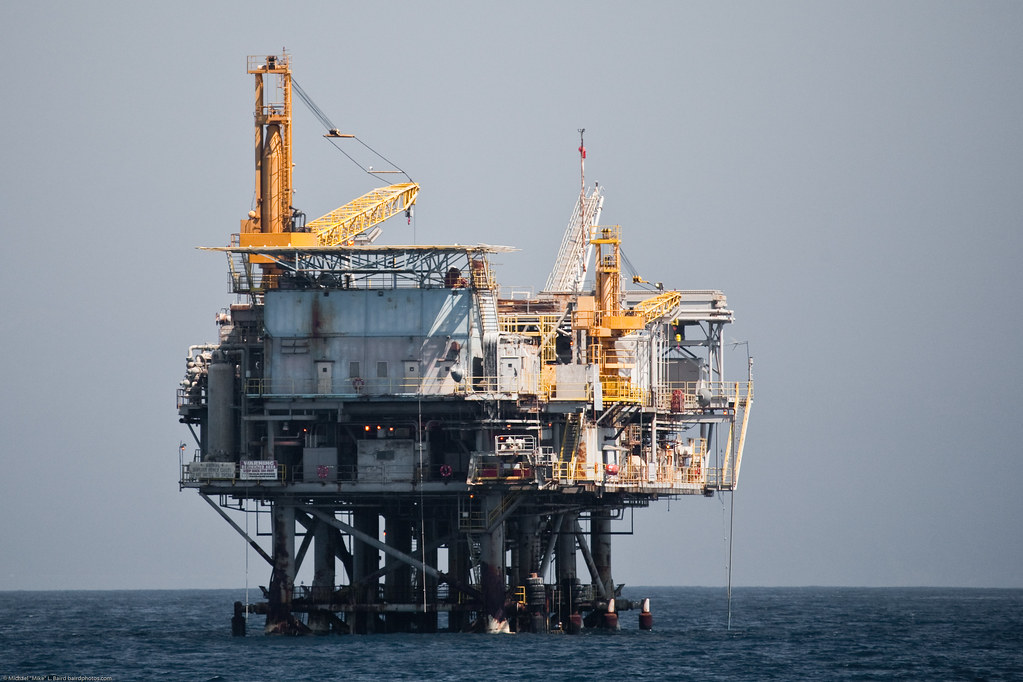
Should the U.S. expand offshore oil drilling?
Recently in the news the House of Representatives considered the Comprehensive American Energy Security and Consumer Protection Act. This is a bill that was designed to protect our coast up to 50 miles off shore. This bill also gave states the right to drill within 50 miles of their own shoreline. Essentially this gives states the right to expand their own drilling accordingly. The real issue here is not whether or not America should or is allowed to expand their oil drilling operations. The real issue is why are we wanting to continue to expand our oil drilling?
For years we had regulations forbidding drilling offshore as it had horrible environmental issues. There are many reasons that offshore drilling in sensitive coastal areas is a bad idea. Take these 10 for starters:
- We can’t drill our way out of the energy crisis.
For years we have been issuing a number of permits to drill within land deemed “public use” and even more recently the government has released government-mandated land. While exploring whether or not the country can find more petroleum is a great idea. The benfits of fiding more gasoline has yet to lower the prices we experience as a society. In fact, it appears that the more we drill the higher prices go. There is simply no correlation between the two.” - We don’t have enough oil to meet our demand.
The amount of oil that the U.S. uses is insurmountable. According to the government and reserve numbers, we have less than 2 percent of the world’s known reserves. Yet according to economists we use over 25 percent of its oil. Even if we were to drill off of every coastal beach, and inside every national park, refuge, and forest, we could not produce enough oil to offset our growing demand. This makes it obvious that the United States needs to develop an alternative energy source in order to continue growing as a nation. - Oil companies have not utilized the leases they have now.
Here is something to consider that in the U.S. Less than 25 % of all areas for drilling are being utilized. The oil companies are asking for more land when they have been given more land and are attempting to create a high demand before they will utilize this land. What’s more, the government already leases 44 million acres offshore, of which only 10.5 million—or one quarter—are producing oil or gas. So tell me before you take away the national parts or push people off their land tell me, “Why are we not using the land we have already granted? - Offshore drilling would have an “insignificant” effect on long-term prices.
Offshore drilling in sensitive areas would increase domestic oil production by 3 percent by 2030 compared to a reference case, according to the Energy Information Administration. But “because oil prices are determined on the international market…any impact on average wellhead prices is expected to be insignificant.” - Drilling could lock us in to a future of expensive gasoline.
By committing to costly recovery, oil companies are betting that oil prices (and gas prices) will stay high enough to justify their investments. Opening the Outer Continental Shelf could never bring us back to $2-a-gallon gas, but would ensure that companies that develop the newly available oil have an interest in keeping gas prices high enough to justify their investments. - Production would be expensive, would not start for a long time, and would have no short-term effect on oil prices.
The average oil field size in the OCS is smaller than the average in the Gulf of Mexico, which is already being developed. As a result, much of the oil in the OCS would be expensive to extract and is only becoming attractive now as a result of high oil prices.
According to the Energy Information Administration, it would take at least five years for oil production to begin. EIA predicted that there would be no significant effect on oil production or price until nearly 20 years after leasing begins. - There isn’t enough drilling equipment.
Due to the high price of oil, existing drilling ships are “booked solid for the next five years,” and demand for deepwater rigs has driven up the price of such ships. Oil companies just don’t have the resources to explore oil fields in the OCS. - We can’t refine the oil we would extract.
In a June speech, President George W. Bush noted that, “Refineries are the critical link between crude oil and the gasoline and diesel fuel that drivers put in their tanks.” Yet refineries are already so stretched that last year, the United States had to import almost 150 million barrels of gasoline. The Wall Street Journal reported oil companies are not building new refineries because it would be bad for their bottom line: “Building a new refinery from scratch, Exxon believes, would be bad for long-term business.” - Drilling more oil now is not the path to a future based on alternative energy.
President Bush said in his speech that “in the short run, the American economy will continue to rely largely on oil,” but “in the long run, the solution is to reduce demand for oil by promoting alternative energy technologies.” Unfortunately, President Bush opposed efforts to shift tax incentives from big oil companies to efficiency and clean energy technologies, such as plug-in hybrid electric vehicles. If alternatives are the future, why propose an oil-based solution to the energy crisis that will not show any results for years? - Debating offshore drilling in sensitive areas distracts from real solutions.
Instead of focusing on offshore drilling in sensitive areas, we should be thinking about both short- and long-term solutions to the energy crisis. To reduce oil prices, we can burst the speculative bubble by selling a half-million barrels of oil per day from the full Strategic Petroleum Reserve. To help families, we should close oil company tax loopholes and recover lost royalties on oil and gas from federal waters, and return these funds to low- and middle-income households in a fuel price “relief bate” program.
Speculators have increased oil prices by up to $30 per barrel, so the administration should make trades more transparent and increase the “margin” for speculators. In the long run, we must move beyond oil by investing in clean, sustainable biofuels such as cellulosic ethanol, require and promote super fuel-efficient cars, and shift tax incentives away from fossil fuels and toward clean alternative energy and efficiency.
The real solution to the energy crisis—and to the climate crisis—is to innovate, become more efficient, and move forward. That’s why offshore drilling in sensitive areas is a bad idea. For a long-term plan, it is remarkably short-sighted.
The compromise bill does include some positive measures, such as a renewable electricity standard that would require all utilities to generate 15 percent of their electricity from wind, solar, geothermal, or other renewable energy sources. It would also extend tax incentives for renewable energy and efficiency, paid for by closing tax loopholes for big oil, and sell oil from the nearly full government petroleum reserves to lower gas prices.

